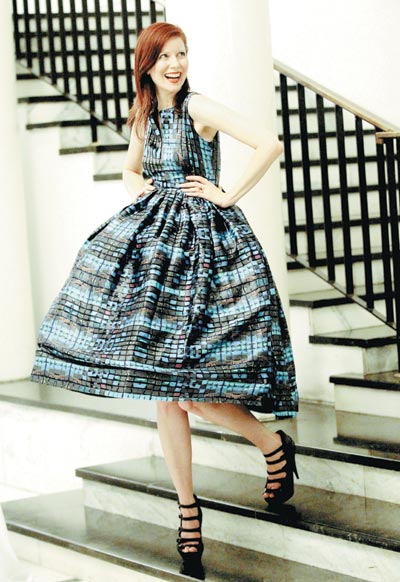Mechanical fashion: Wired to wear
 |
|
'Mechanical' dresses are expected to become a part of everyday life in the near future. Photo provided to China Daily |
 |
| Highlights of London Fashion Week: Sept 14 |
 |
| Fashion reaction to iWatch slow, irrelevant |
"One dress for a woman will need to be multipurpose" because she won't be buying as many clothes and might not have time to change from one event to the next, Trepte says in an exclusive China Daily preview a week before the dress debuted in Beijing in August. "The question is how to create a dress that transforms radically."
The CEO of 360 Fashion Network, a fashion-technology company in Beijing, saw the answer in a robotic dress. In May, she began working on its blueprint with a wearable technology designer in Shanghai.
In 2006, British-Turkish Cypriot designer Hussein Chalayan launched in Paris "One Hundred Eleven", a collection that showcased a century of fashion in just five dresses. As models walked down the runway, their dresses morphed through three decades of style. Hemlines rose, sleeves unfurled, a zipper closed and a hat changed shapes, as if the audience was watching a movie time lapse.
Hidden under the dresses were battery packs, controlling chips and electronic motors. These operated pulleys attached to thin wires running throughout the garments, which pushed, pulled and moved the fabrics, explains Rob Edkins, director of British firm 2D3D that created the mechanism.
He describes the dresses as "mechanical". But they can also be considered robotic, since the garments use mechatronics, a combination of mechanical, electronic and software engineering that is used in robotics, says Sabine Seymour, director of the Fashionable Technology Lab at Parsons the New School for Design.






















